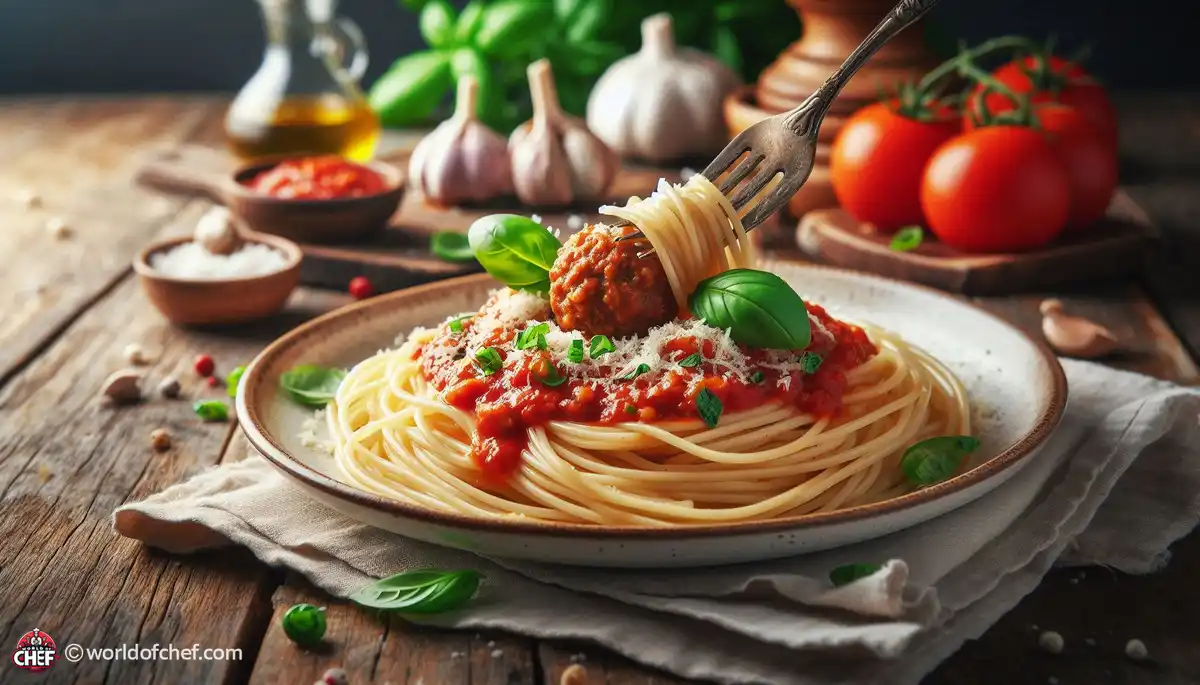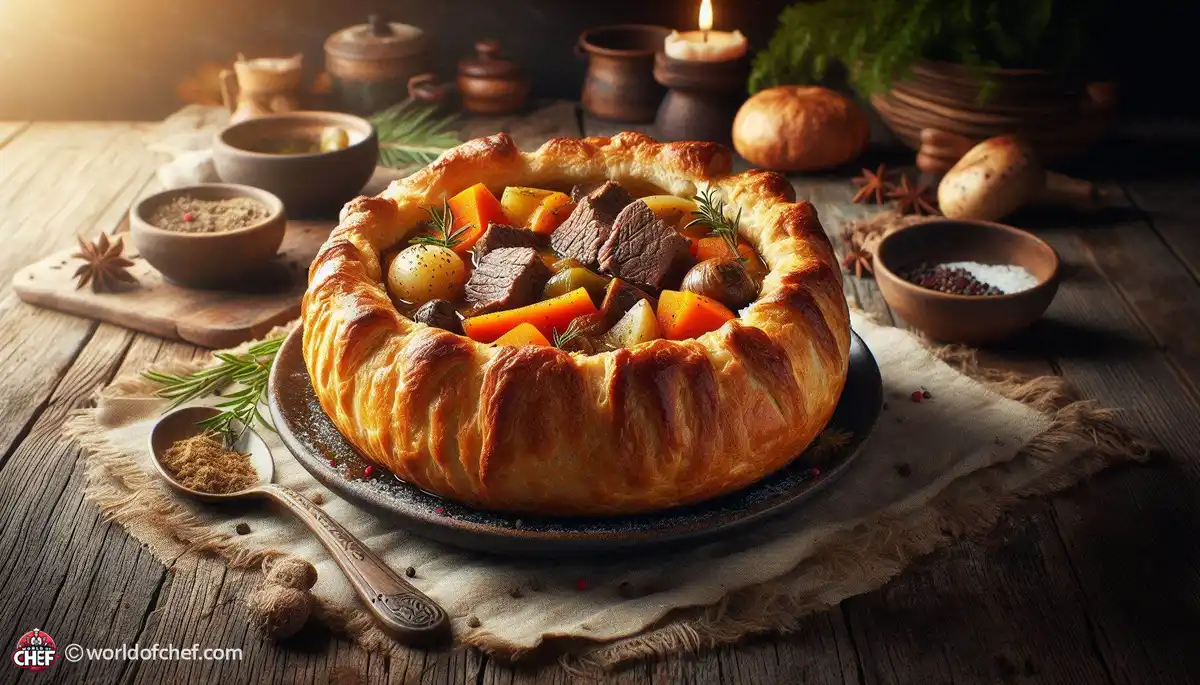
Easy Slow Cooker Chili Recipes for Busy Weeknights
Alexander Kuhns - Oct 16, 2024 - 15 min read


Comfort food does not come much closer to spaghetti and meatballs. It's a warm, nostalgic comfort food for the heart as well as the table. But, for those people who are gluten intolerant, it seems to be a food that is forever out of reach. Never fear! This article shall guide you through tasty hints and recipes to make your mouthwatering gluten-free spaghetti and meatballs dish everybody will adore.
Gluten is a protein present in wheat, barley, and rye. Gluten in most people causes no disease; however, those people with celiac disease and gluten sensitivity will cause their serious health issues. Understanding what gluten is and then how to avoid it when you cook gluten-free is imperative. Fortunately, there are numerous alternatives that let you enjoy your favorite dishes free from gluten-related worries.
The market is flooded nowadays with gluten-free pasta varieties made of rice, corn, quinoa, and lentil. Each has a difference in texture and taste so experiment with a few you prefer. Rice pasta typically has a more classic, almost traditional taste to it while lentil pasta tastes nutty and protein-laden. Always look into labels and select those offering guarantee of gluten-free by certified brands.
Cooking gluten-free pasta is a different affair compared to wheat. Gluten-free pasta cooks somewhat like any other pasta and does tend to get mushy if cooked for too long. Therefore, make sure you read the package that shows how to cook for how much time. Probably the time required will be lesser by one or two minutes as that of any wheat pasta. Once this is done, rinse the pasta under cold running water to stop the cooking process and ensure that it is perfectly al dente.
Once you cook your gluten-free pasta, proper storage will help to keep the texture in check. For leftovers, a little olive oil to prevent sticking and keep it in an airtight container in the fridge for three to five days. Reheat with a little water added to keep moist and heat gently so the pasta doesn't dry out.
The meat you decide to use will really affect the flavor and texture of your meatballs. Using ground beef is extremely common, but you can use ground turkey, chicken, or pork for a variation. Mixing meats will also make a more complex flavor. Higher fat content meat also keeps your meatballs moist so try to combine leaner and fattier options.
Given the fact that meatballs created using gluten-free meat cannot be held together with bread crumbs, something else must help in binding the ingredients together. Gluten-free bread crumbs, almond flour, and even oats work very well to do this. Also, eggs are great to hold the meatballs because of their binding nature such that when they are getting cooked, they will actually remain intact. Use them both and experiment until you achieve that perfect texture with your palate.
Seasoning is the make-or-break element in meatballs. Bright freshness from parsley, basil, or oregano can complement the depth from garlic and onion powder. Do not be afraid to try out spices like paprika or crushed red pepper for a kick. Always taste the mixture before you start shaping the meatballs, and add more seasoning if needed.
There are several ways to cook your meatballs. You can fry them in a pan and cook them to get an exquisite crispy exterior, or you can bake them in order to get a relatively healthy option, or just simply simmer them in some sauce to give it that tender finish. Each option, of course, offers various advantages, so choose an approach that suits your cooking personality best. Baking would naturally be a more hands-off kind of thing, and sometimes pan-frying brings an exquisite sear for deeper flavor.
The heart of any spaghetti and meatballs dish is a great sauce. Classic tomato-based sauces are always a winner, but you can also get creative with cream or pesto for a twist. If you want a richer flavor, roast your tomatoes before using them to really bring out their sweetness. You can also use the best canned tomatoes, like San Marzano, for a dramatic difference in the flavor of your sauce.
Onions, garlic, and carrots are the aromatic essentials which constitute the basis of the flavor of your sauce. Sauté them until soft and fragrant, and then add in your tomatoes. To further enhance this sauce, you can incorporate red wine, broth, or even balsamic vinegar. Simmer this sauce to let the flavors mix into an amazing savory taste.
Fresh herbs introduce a really deep dimension into a blank sauce by including basil, thyme and oregano to others. You add them to the cooking towards the very end because you're really saving those brighter flavors to be savored just for the sauce. Next to salt and pepper definitely to taste yourself, that may include just a pinch of sugar when acidity means you don't want something to be too sour. Thicken Your Sauce
For a thicker sauce, you have these options. Simply cooking the sauce uncovered allows you to let excess moisture cook off, which can cause it to thicken slightly. Or you may want to add a tablespoon of cornstarch or arrowroot dissolved in a small amount of water to your sauce. This approach adds thickening without affecting flavor. Try these methods to arrive at the consistency you desire.
As long as your sauce is done and your meatballs have been cooked, now's the time to add them to the gluten-free spaghetti. Make sure by then that the pasta's al dente. Mix everything together in the sauce for a couple of minutes and let it absorb all of those flavors. This would make for a full and fantastic restaurant-style dish.
Presentation will make your dish. Present this spaghetti and meatballs from deep bowls, some fresh basil or parmesan cheese sprinkles to finish if you choose to present it with non-dairy. Garlic bread goes very well with the gluten-free version of the entrée, and a fresh salad adds some crunches and balancings toward the end.
Store leftovers separately for the texture of the pasta to be preserved. Keep meatballs and sauce in one container and pasta in another. They will last almost three to four days in the fridge. Warm the sauce up gently on the stovetop then add pasta at the final heating time so that it is not overcooked.
Feel free to make this recipe your own! Add in some veggies to the sauce like zucchini or bell peppers, or substitute in plant-based meatballs instead. Gluten-free doesn't mean you have to compromise on flavor or creativity. Try new ingredients and combos and don't be afraid to adjust recipes to your tastes.
Cooking gluten-free also requires the eye that reads between the lines on a label. Most of the products, from sauces to seasonings, have hidden gluten in them. Use as many certified gluten-free products as possible to prevent contamination. Cautious ingredients keep the meal safe and enjoyable for all.
Do not be hesitant to try out new ingredients or techniques. The thing with cooking is creativity, and gluten-free cooking offers more options. Consider experimenting by using different types of gluten-free grains or legumes to make pasta or coming up with different spices you can add to your meatballs. The more you explore, the more wonderful discoveries you'll make.
If you are dining out, encourage the presence of your guests and arrange a meatball station that can then make your dinner a night worth remembering because they would recall that you could be cooking for them with great efforts.
Follow up on the gluten-free trend and new products. Gluten-free markets are constantly updating, and new ingredients and recipes come out every day. Keep an eye out for online communities and blogs that specialize in gluten-free products. Share experiences and get fresh ideas and exciting things for your meals.
Gluten-free spaghetti and meatballs can be just as delicious and filling as the original. Using the right ingredients, proper techniques, and a pinch of creativity will ensure that every person at the table will enjoy the dish, gluten or no gluten. So gather all your ingredients, roll up your sleeves, and start making this comforting dish to warm hearts and fill bellies.

Alexander Kuhns - Oct 16, 2024 - 15 min read

Emery Donley - Oct 16, 2024 - 6 min read

Brad Damian - Oct 16, 2024 - 11 min read

Craig Ackley - Oct 15, 2024 - 6 min read